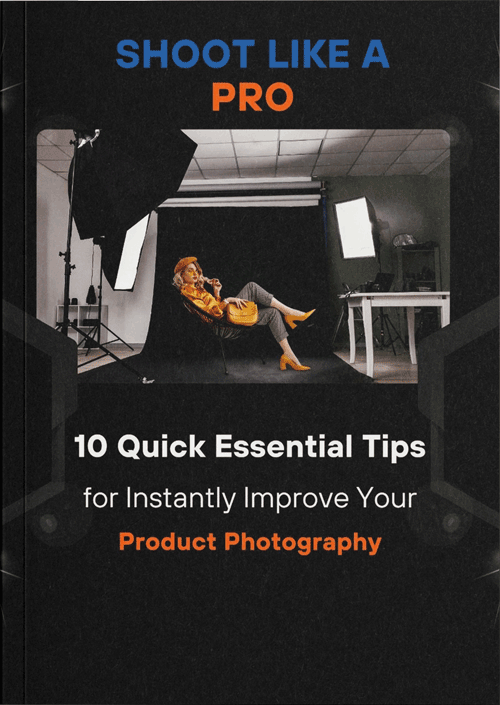Join us as we explore the top choices for the “Best Lenses for Sports Photography” in 2023 and unlock the potential to capture unforgettable sports images. Getting the perfect shot is essential in the full world of sports photography. Having the appropriate lens may make all the difference in capturing amazing, dynamic photographs, whether photographing elite athletes, quick-paced action, or tough tournaments. The year 2023 will bring a variety of premium lens alternatives designed especially for sports photography as technology develops further. These lenses provide excellent image quality, quick autofocus, and features engineered to perform well in difficult shooting situations. In this article, we’ll examine some of the top sports photography lenses for 2023, taking into account things like aperture, AF speed, and more. This collection of lenses will allow you to capture those breathtaking moments on the field, court, or track with accuracy and clarity, whether you’re a professional photographer or a beginner trying to improve your performance.
In 2023, there are several excellent lenses available for sports photography, depending on your specific needs and camera system. Here are some professional picks for the best lenses for sports photography in 2023:
How to Choose the Best Lenses For Sports Photography
Choosing the best lens for sports photography requires careful consideration of several factors. Here are some key aspects to keep in mind when selecting a lens:

Focal Length: Sports photography often requires capturing action from a distance. A lens with a longer focal length allows you to zoom in on the subject and fill the frame. Telephoto lenses, typically ranging from 200mm to 600mm, are popular choices for sports photography as they offer the necessary reach.
Aperture: Sports events can occur in challenging lighting conditions, such as indoor arenas or evening games. A lens with a wide maximum aperture (represented by a smaller f-number, e.g., f/2.8) allows for faster shutter speeds and better low-light performance, resulting in sharper images. Look for lenses with a wide aperture, ideally f/2.8 or wider.
Autofocus Speed and Accuracy: Fast and accurate autofocus is crucial for sports photography. Look for lenses that feature advanced autofocus systems, such as ultrasonic or silent wave motors (USM or SWM), as they can quickly lock onto moving subjects and maintain focus.
Image Stabilization: Image stabilization helps minimize camera shake, especially when shooting handheld or slower shutter speeds. This feature is particularly beneficial when using longer focal lengths. Look for lenses with built-in optical image stabilization (OIS) or vibration reduction (VR) technology.
Build Quality and Weather Resistance: Sports photography often involves shooting in various weather conditions and demanding environments. A lens with a robust build quality and weather sealing will withstand the rigors of outdoor shooting and provide durability and reliability over time.
Compatibility: Ensure that the lens you choose is compatible with your camera system. Different camera manufacturers may have specific lens mounts, so verify compatibility before making a purchase.
Budget: Set a budget based on your needs and prioritize the most essential features. While professional-grade lenses often come with a higher price tag, there are also excellent options available at more affordable price points.
Sample Images and Reviews: Before buying a lens, review sample images taken with that lens to evaluate its image quality and performance. Read reviews from trusted sources and photographers who have used the lens for sports photography to gain insights into its strengths and limitations.
Rental and Try-Before-You-Buy: If possible, consider renting lenses before making a final decision. This allows you to test the lens in real-world scenarios and determine if it meets your requirements. Some camera stores also offer “try-before-you-buy” programs, allowing you to evaluate lenses before committing to a purchase.
Always keep in mind that your particular needs and shooting style will ultimately decide the best lenses for sports photography. Consider elements like the sports you picture, how close you are to the action, and the shooting conditions you regularly face. You can choose a lens that will improve your sports photography skills by carefully considering these variables.
9 Best Lenses for Sports Photography

Canon EF 400mm f/2.8L IS III USM: This lens is renowned for its exceptional image quality, fast autofocus, and rugged build quality. The wide aperture of f/2.8 allows for capturing fast action in challenging lighting conditions.
Nikon AF-S NIKKOR 600mm f/4E FL ED VR: With an impressive focal length and a wide maximum aperture of f/4, this lens is ideal for capturing distant sports action. It features advanced optics, image stabilization, and fast autofocus, ensuring sharp images even in demanding shooting scenarios.
Sony FE 400mm f/2.8 GM OSS: Designed for Sony full-frame mirrorless cameras, this lens offers outstanding image quality and a wide aperture of f/2.8. It boasts fast and accurate autofocus, excellent build quality, and effective image stabilization, making it a top choice for sports photography.
Sigma 120-300mm f/2.8 DG OS HSM Sports: This lens provides versatility with its zoom range and a fast constant aperture of f/2.8. It delivers excellent image quality, weather sealing, and fast autofocus performance, making it suitable for various sports photography situations.
Fujifilm XF 200mm f/2 R LM OIS WR: Designed for Fujifilm’s X-series mirrorless cameras, this lens offers a focal length equivalent to 305mm in full-frame terms. It has a wide maximum aperture of f/2, enabling you to capture fast action and achieve beautiful background blur. The lens is weather-sealed and features optical image stabilization.
Tamron SP 70-200mm f/2.8 Di VC USD G2: This lens is popular among sports photographers for its versatile zoom range and a wide maximum aperture of f/2.8. It offers excellent image quality, effective image stabilization, and fast autofocus, making it suitable for capturing a variety of sports.

Olympus M.Zuiko Digital ED 300mm f/4 IS PRO: Designed for Micro Four Thirds cameras, this lens provides a focal length equivalent to 600mm in full-frame terms. It features a compact and lightweight design, excellent image stabilization, and high-quality optics, making it a great option for sports photography with Olympus cameras.
Panasonic Lumix S PRO 70-200mm f/2.8 O.I.S.: This lens is part of Panasonic’s full-frame mirrorless system and offers a versatile zoom range with a fast maximum aperture of f/2.8. It delivers excellent image quality, effective image stabilization, and fast autofocus, making it suitable for sports photography with Panasonic cameras.
Sigma 150-600mm f/5-6.3 DG OS HSM Sports: This lens provides an extensive telephoto range, allowing you to capture distant sports action. It features excellent image quality, effective image stabilization, and rugged build quality, making it a popular choice for outdoor sports photography.
Lens Build Quality for Sports Photography
Lens build quality is an important consideration when choosing a lens for sports photography. Sports shooting often takes place in challenging environments, including outdoor venues with dust, moisture, and varying temperatures. A well-built lens can withstand these conditions and provide durability, reliability, and longevity. Here are some aspects to consider regarding lens build quality:

- Construction Materials: High-quality lenses are typically constructed using durable materials such as metal alloys, reinforced plastics, and weather-sealed components. Metal lens barrels and lens mounts enhance the overall durability and provide a solid feel.
- Weather Sealing: Look for lenses that offer weather sealing or dust/moisture resistance. Weather-sealed lenses have gaskets and special coatings to protect against environmental elements, allowing you to shoot confidently even in adverse weather conditions.
- Internal Components: The internal components of a lens, such as focusing mechanisms and image stabilization systems, should be robust and well-engineered. Smooth and precise focusing rings, along with sturdy switches, contribute to a positive user experience.
- Mount Stability: A lens with a secure and stable mount is essential to ensure accurate and consistent communication between the lens and the camera body. A solidly constructed mount minimizes play and ensures a secure attachment.
- Ergonomics: Consider the overall design and ergonomics of the lens. A well-designed lens will have comfortably placed controls, easy-to-use switches, and a balanced weight distribution, enabling you to handle it effectively during long shooting sessions.
- Brand Reputation: Opting for lenses from reputable manufacturers known for their quality control and craftsmanship can provide peace of mind. Established brands often have stringent quality assurance processes and are more likely to produce lenses with excellent build quality.
- User Reviews and Feedback: Reading user reviews and seeking feedback from photographers who have used the lens can give you valuable insights into its build quality and durability. Pay attention to any common issues reported by users to make an informed decision.
Conclusion
These lenses represent some of the best options for sports photography in 2023, offering exceptional performance and image quality. Remember to consider factors such as your camera system, shooting conditions, budget, and personal preferences when selecting the best lenses for sports photography needs. By selecting the best lenses for sports photography in 2023, you can capture breathtaking sports moments and elevate your photography game to new heights, ensuring that your images stand out on social media platforms like Facebook.


